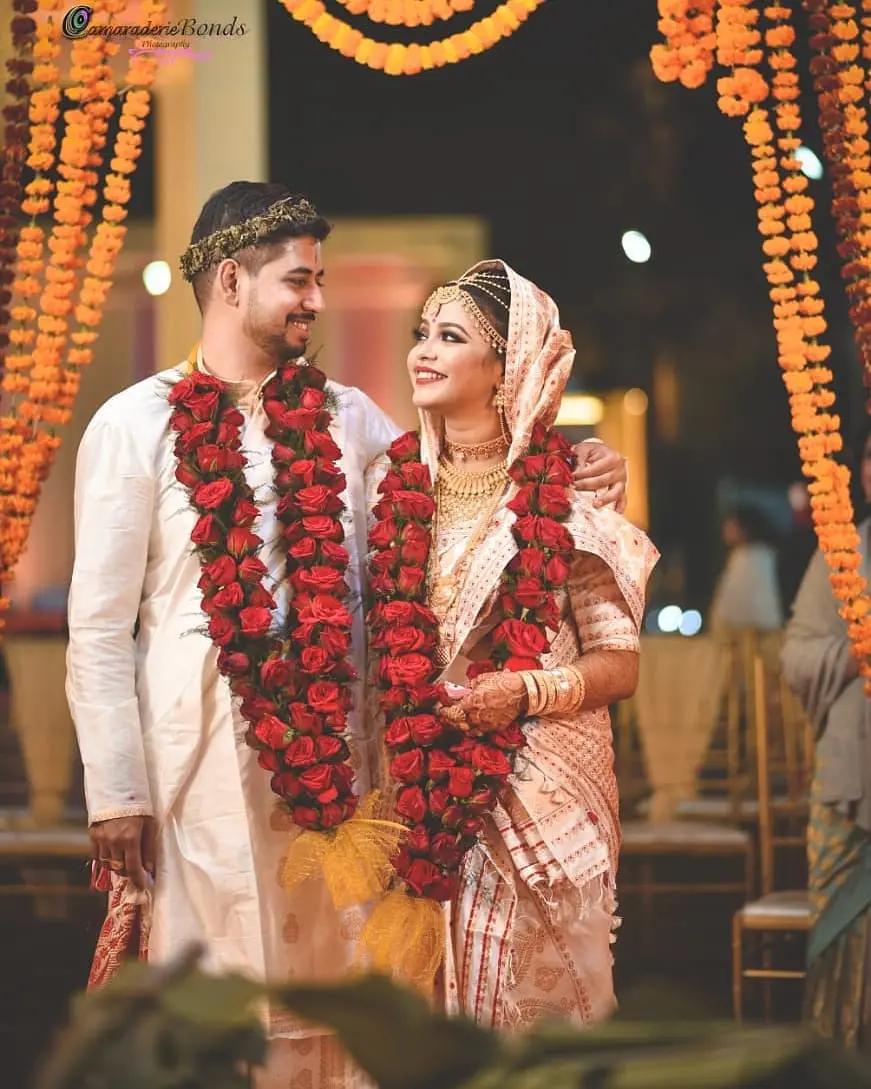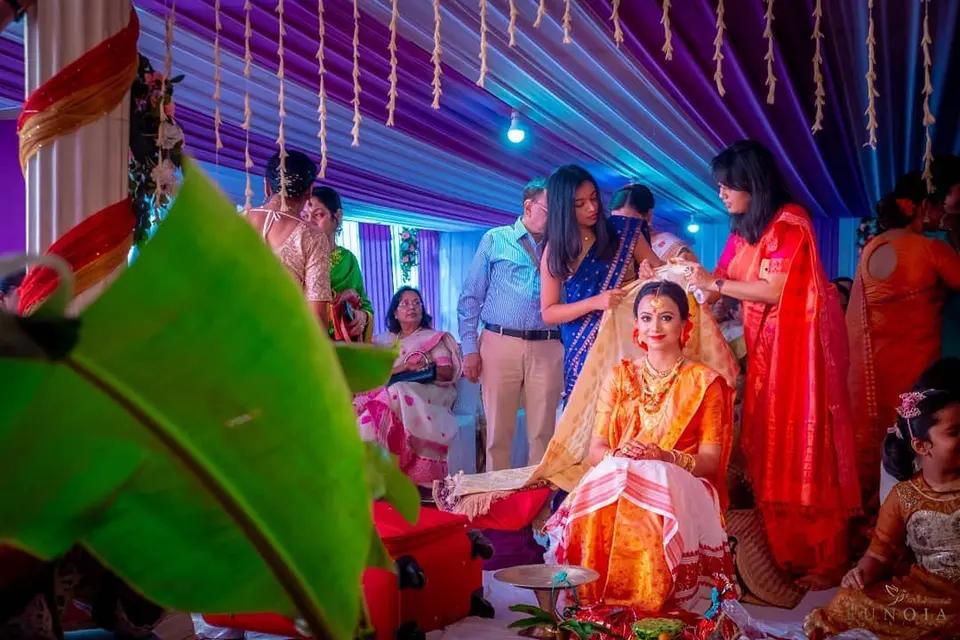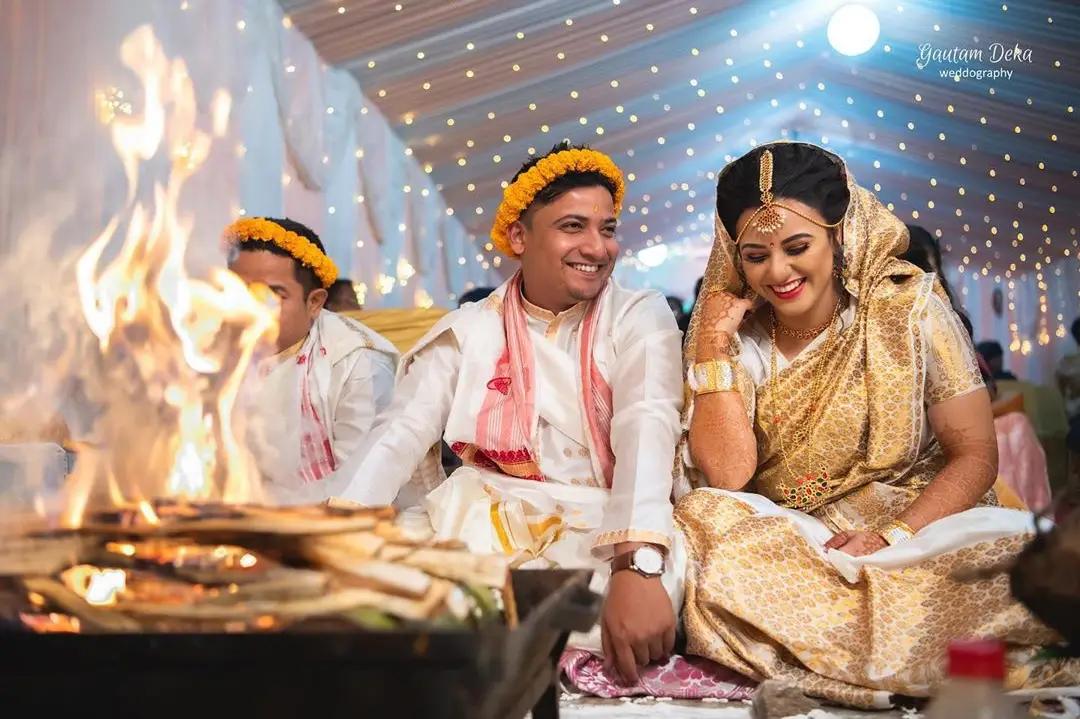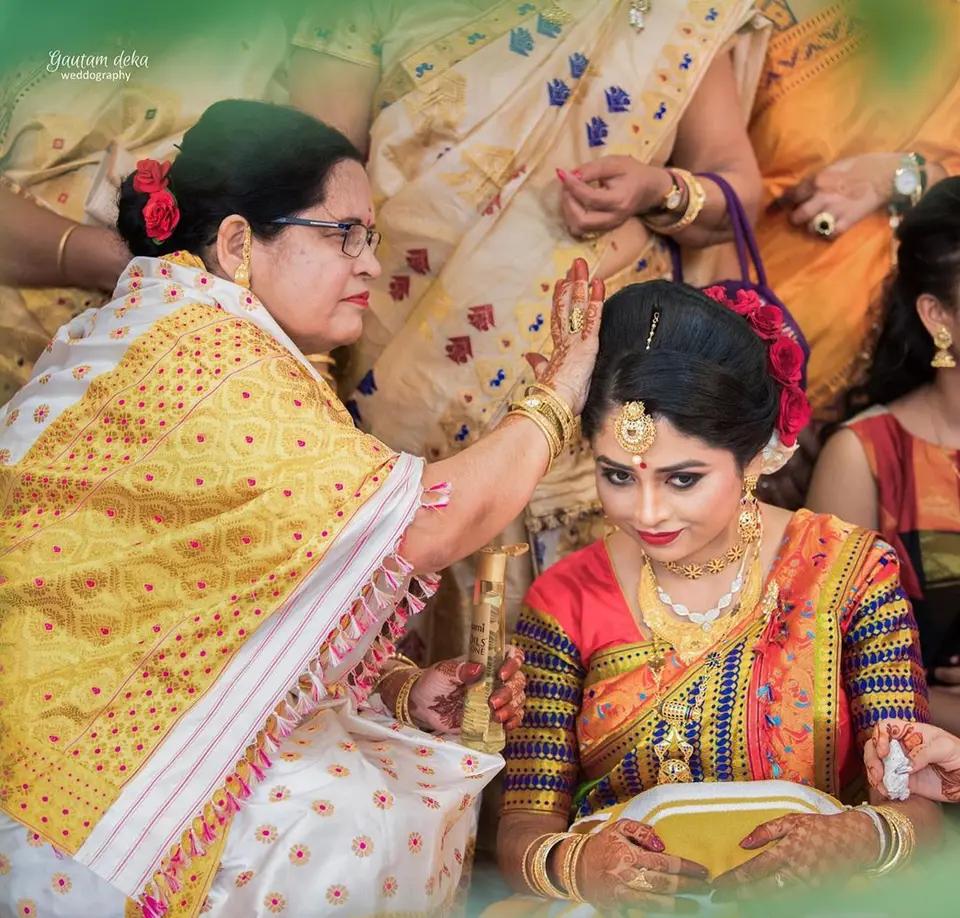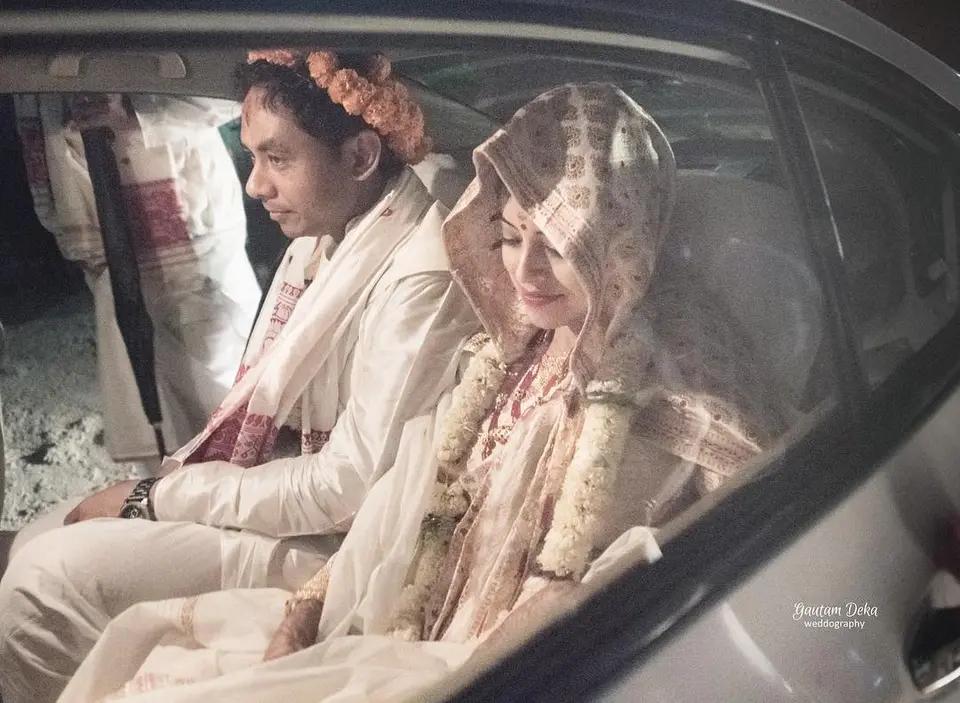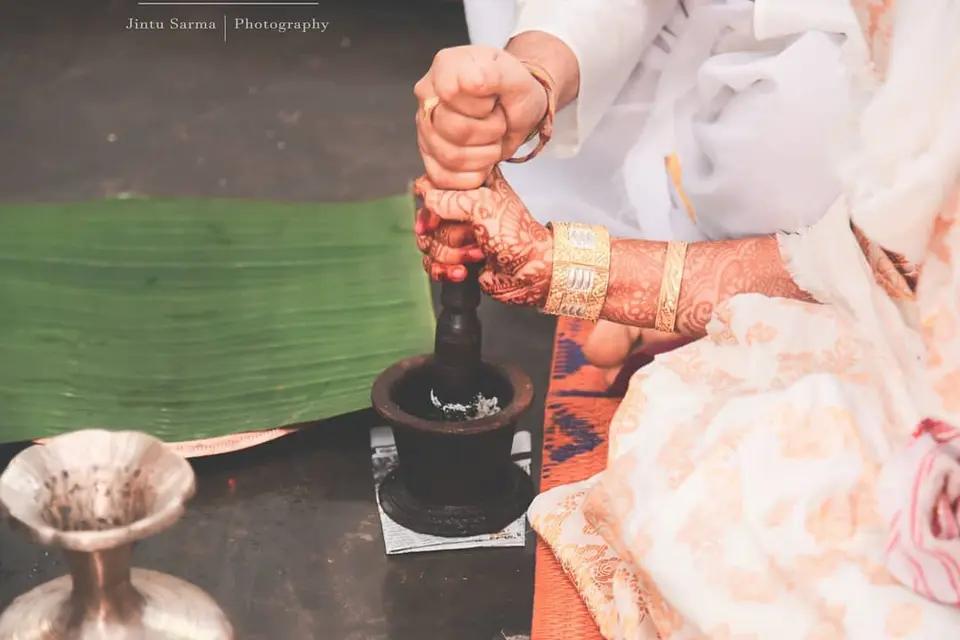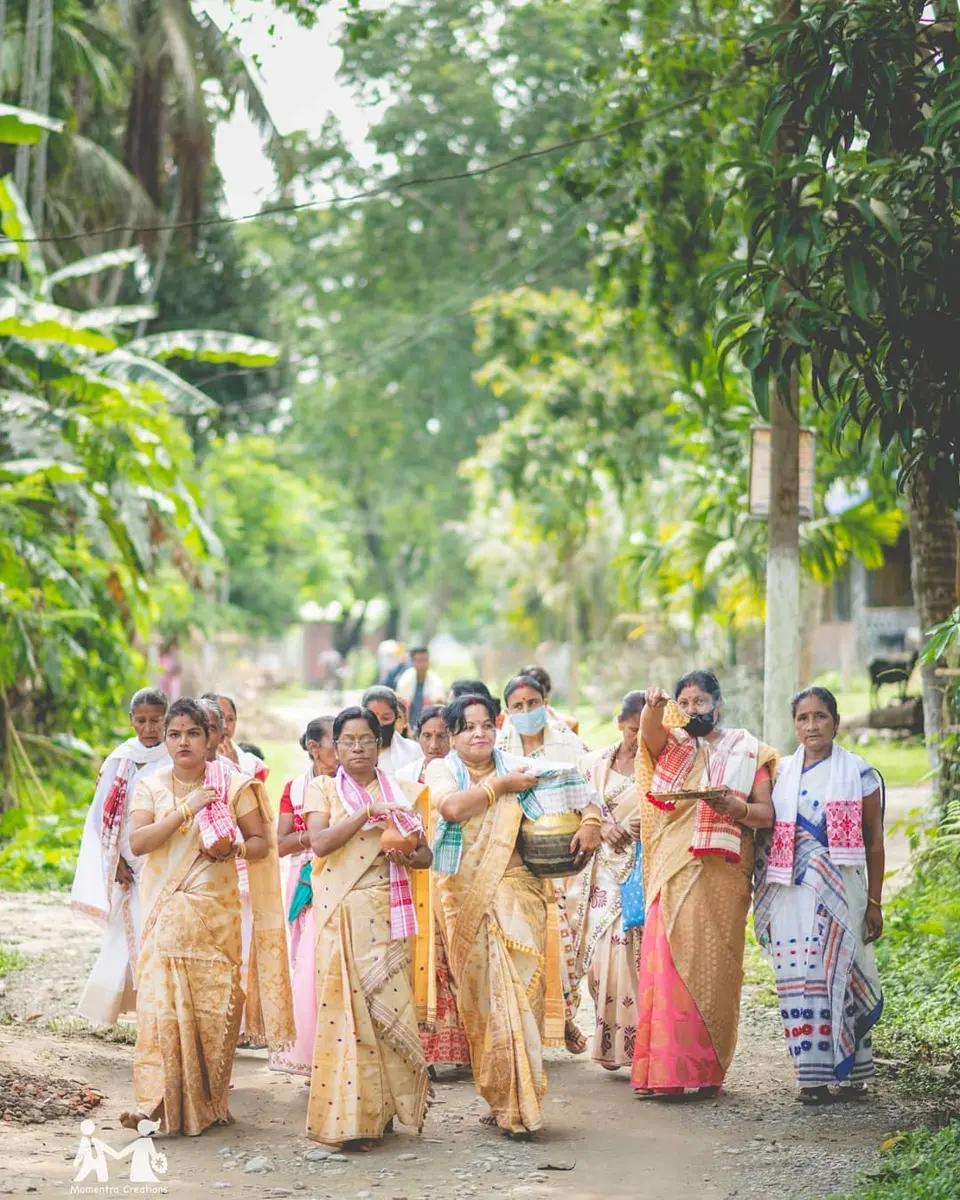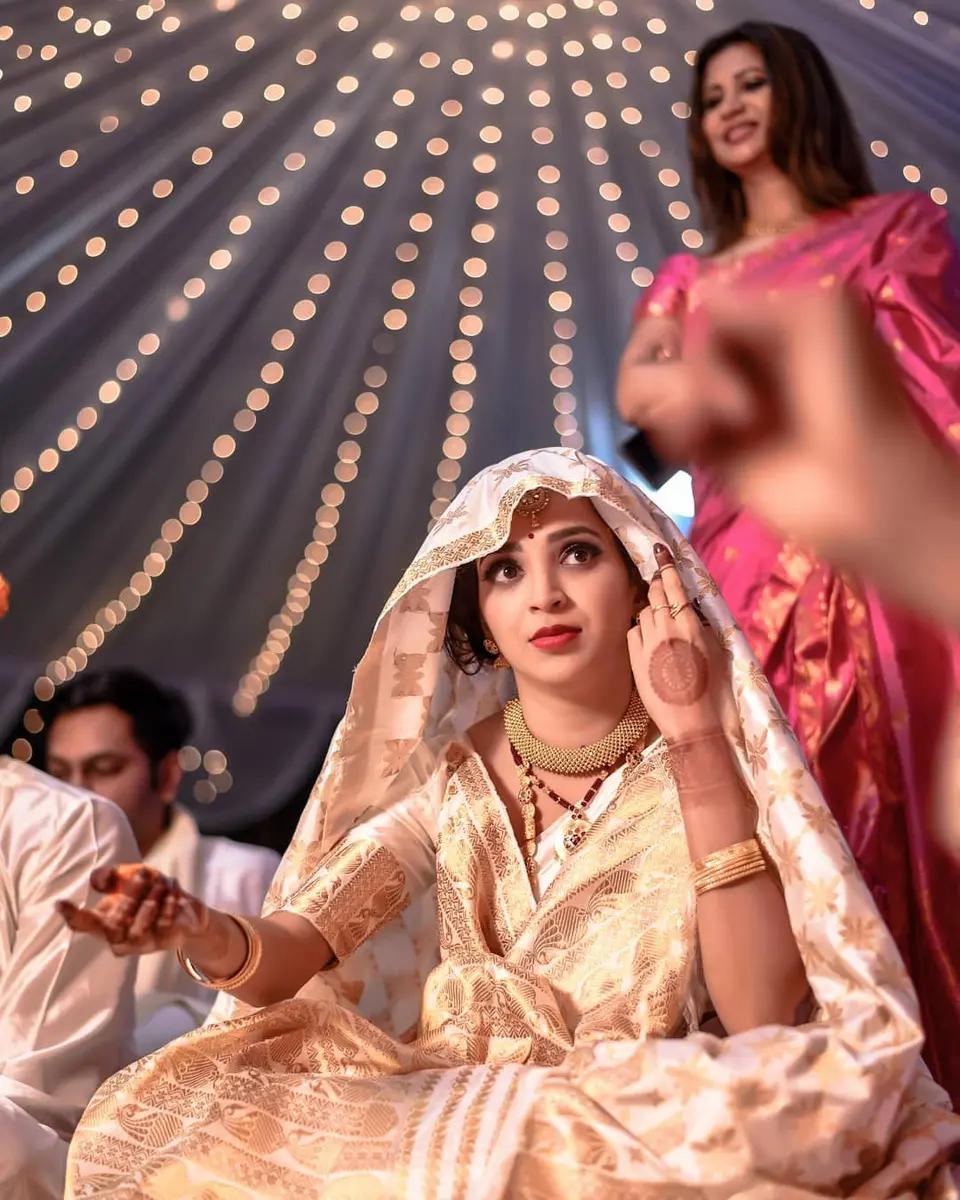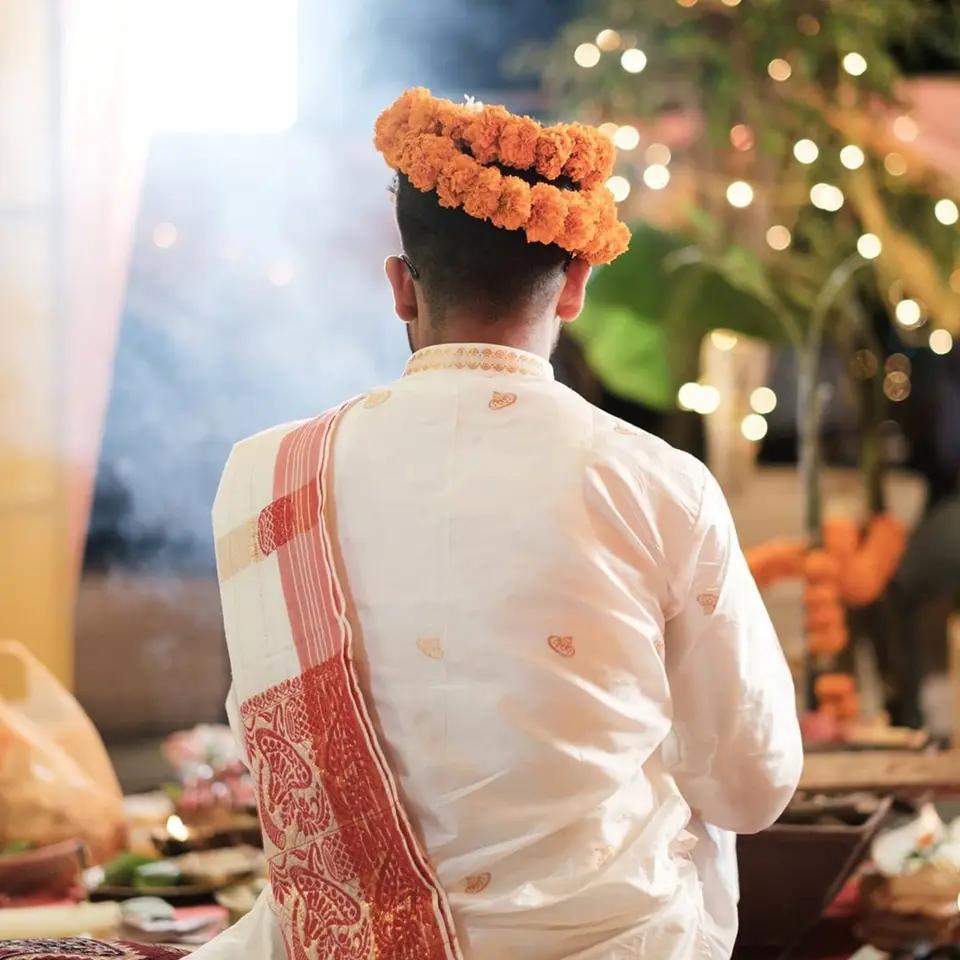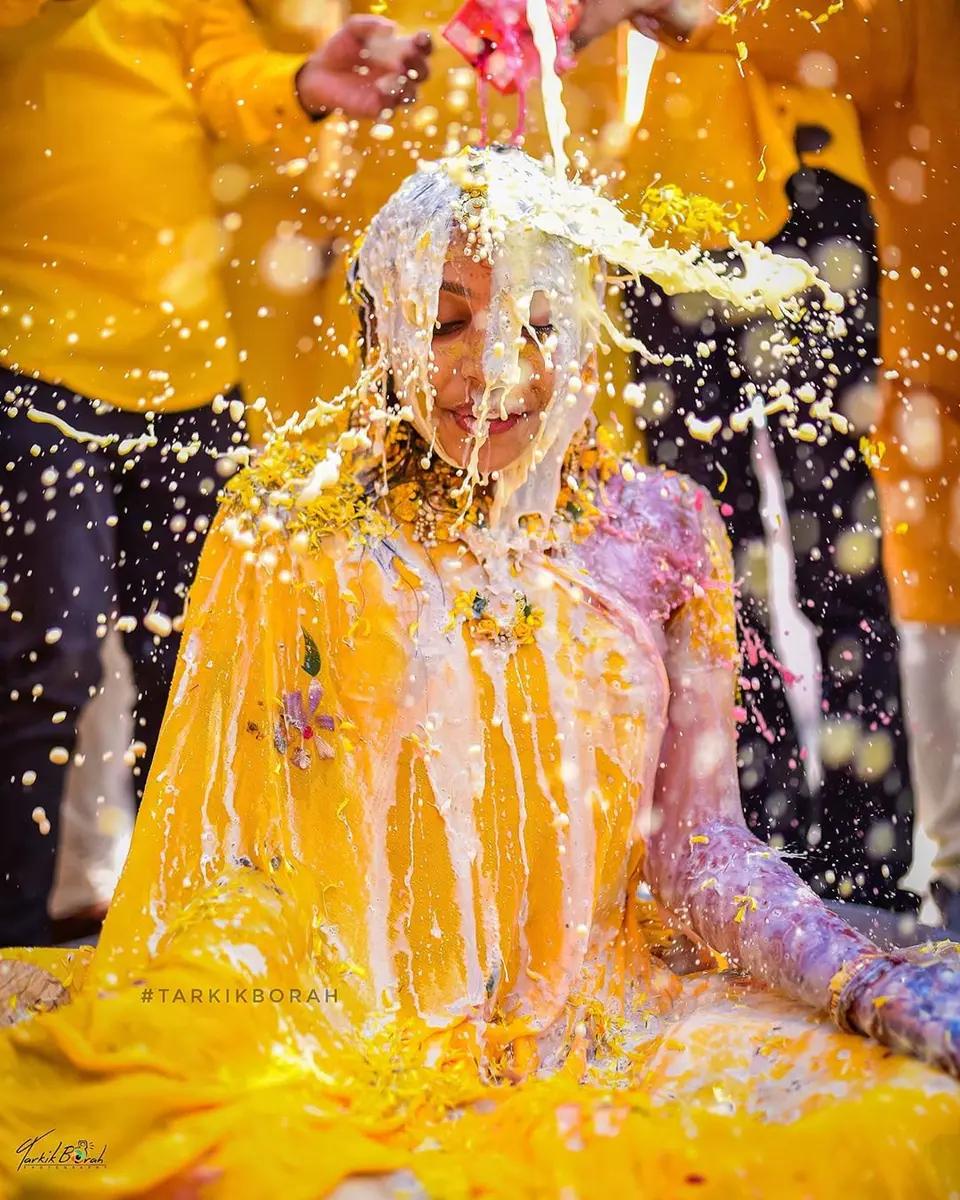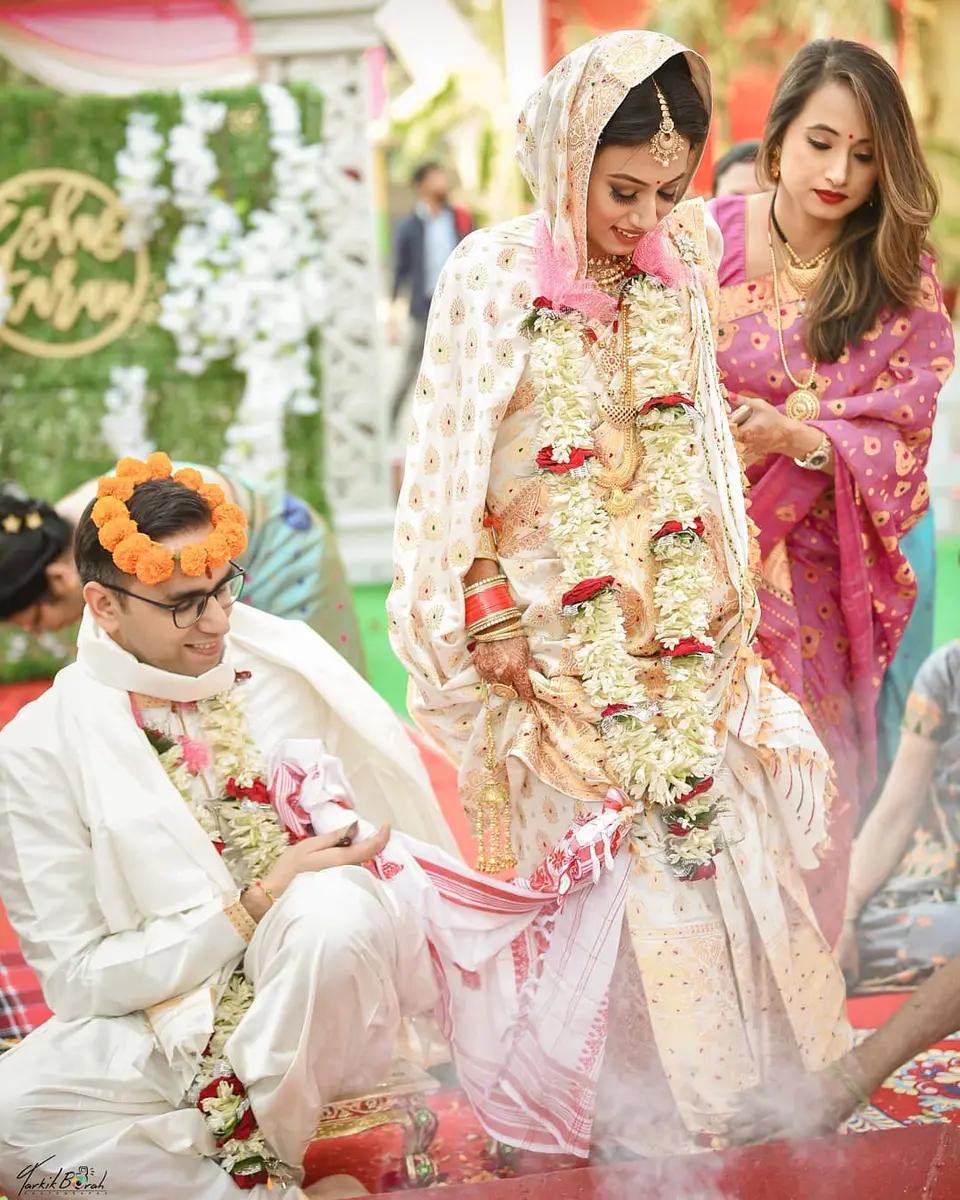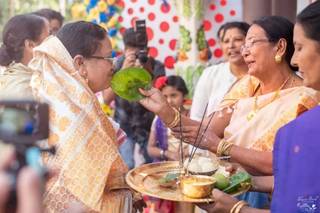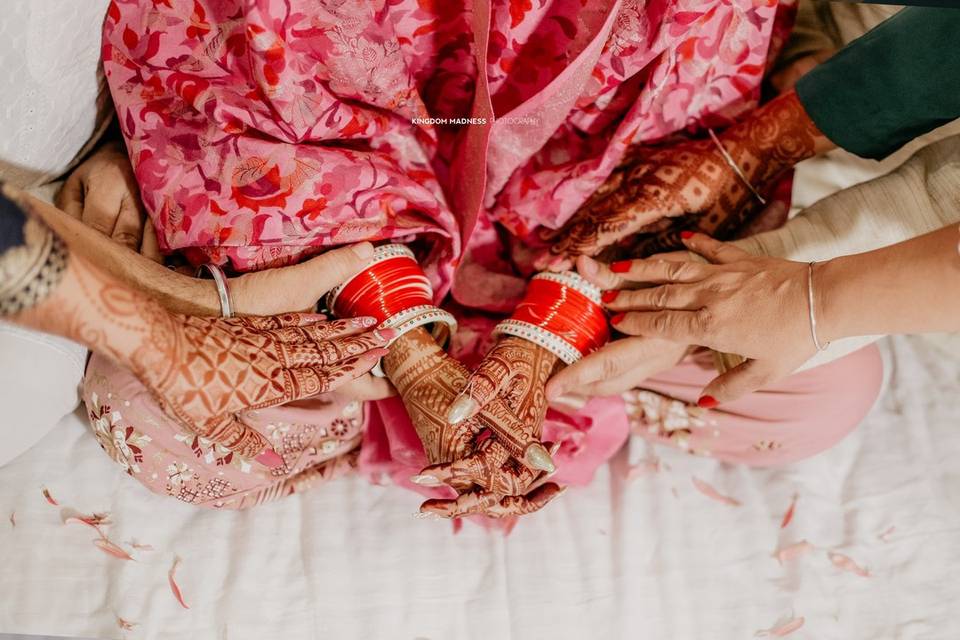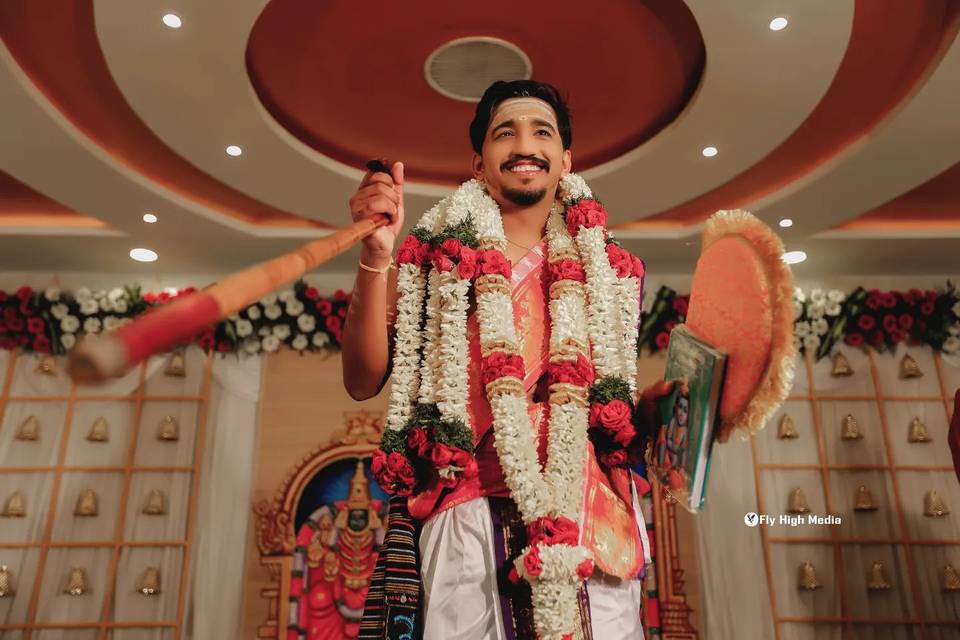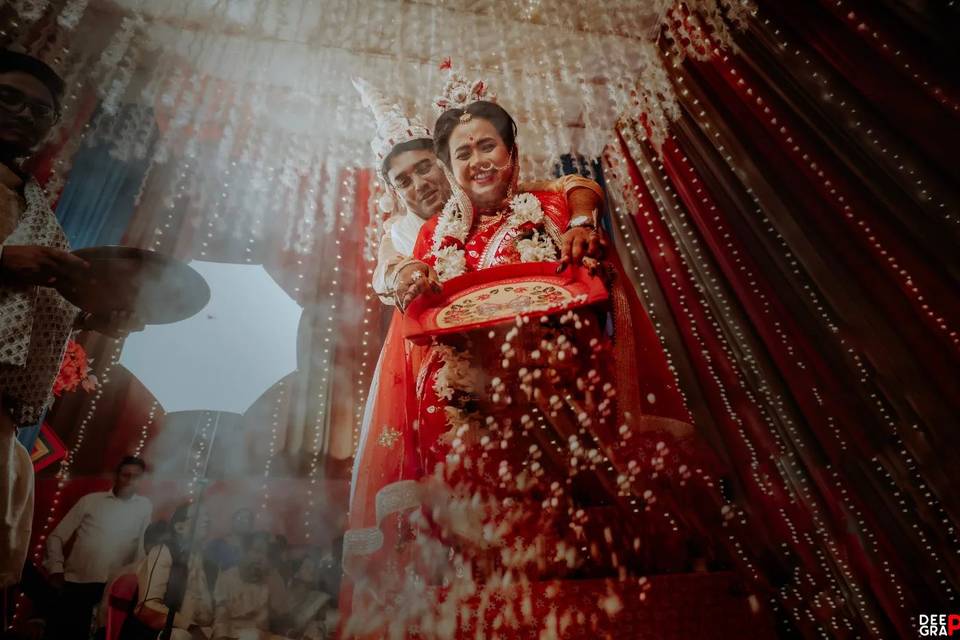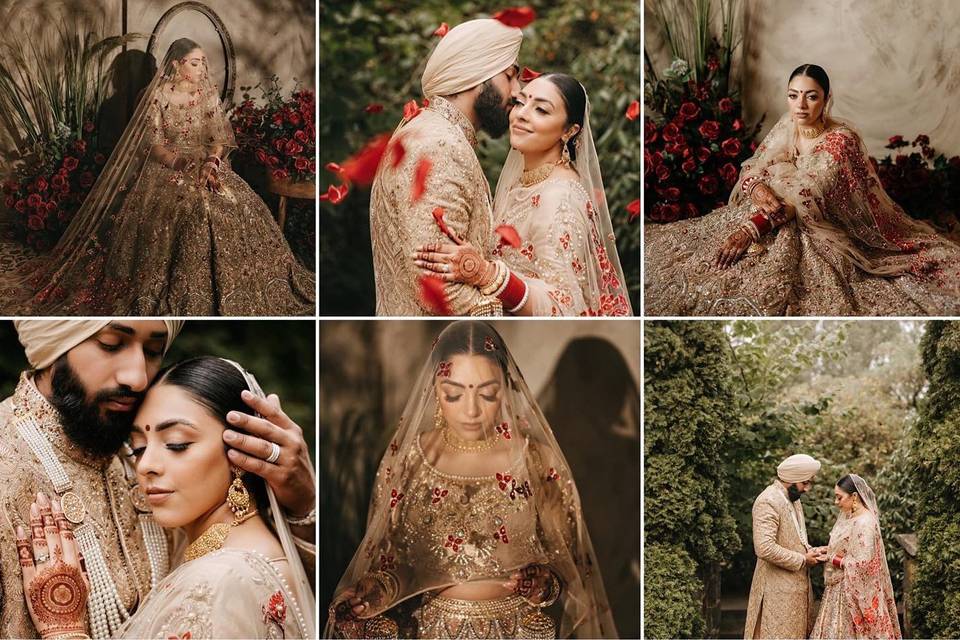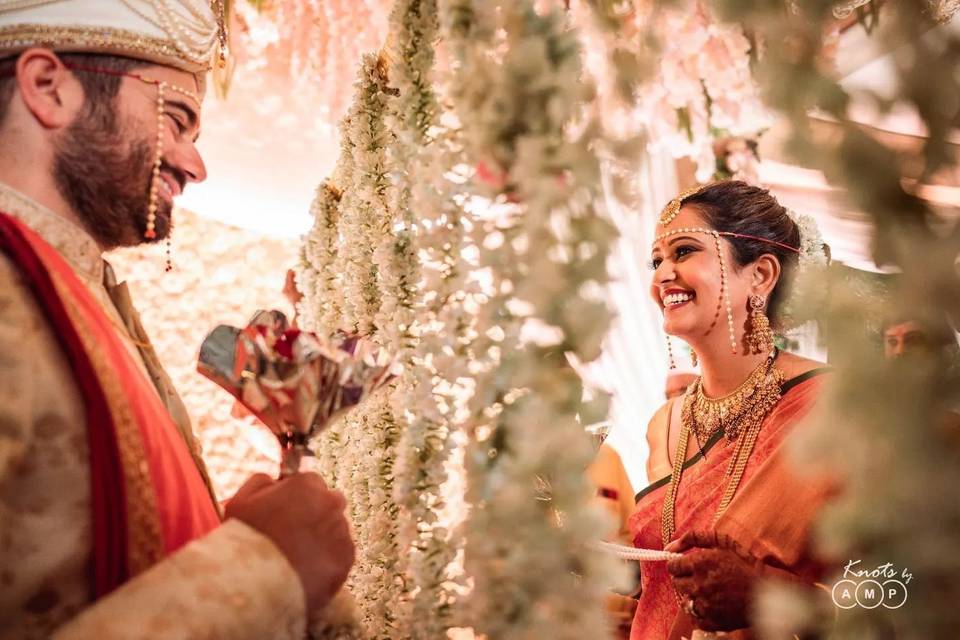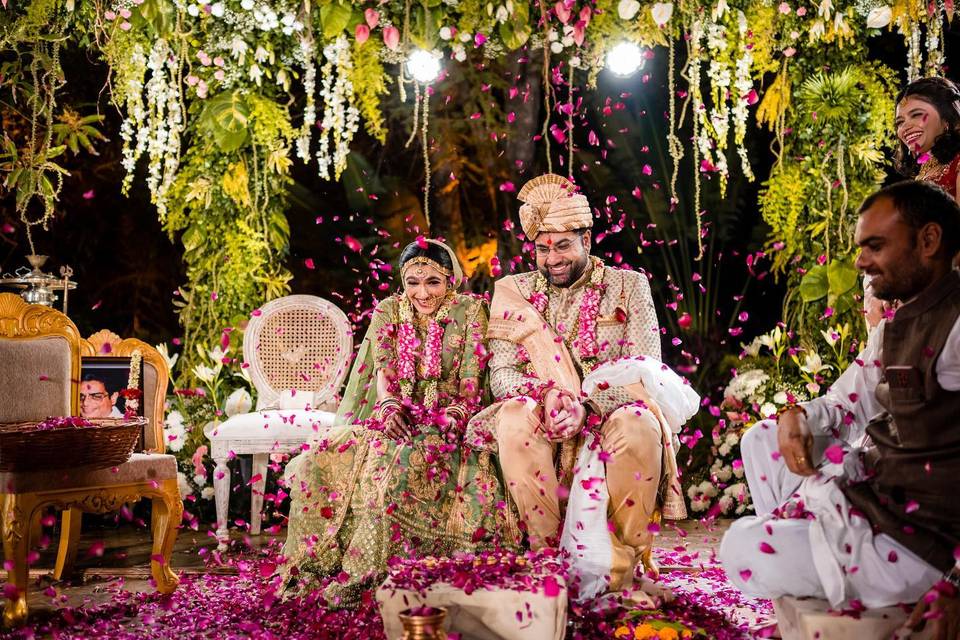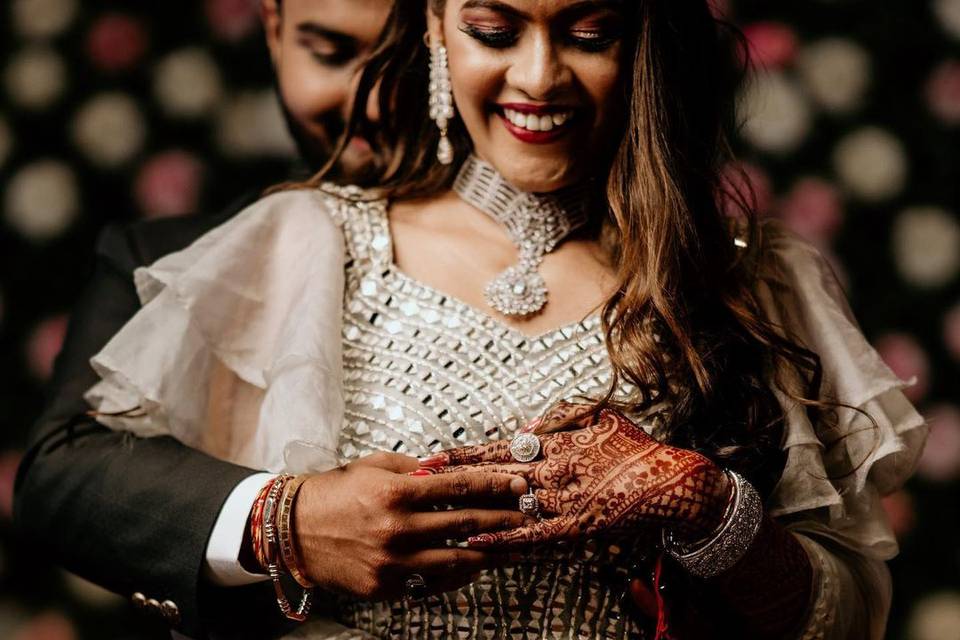Here's a Complete Traditional Guide to an Assamese Wedding
From planning the functions to understanding each mesmerising tradition - find out everything you need to know about an Assamese wedding here.
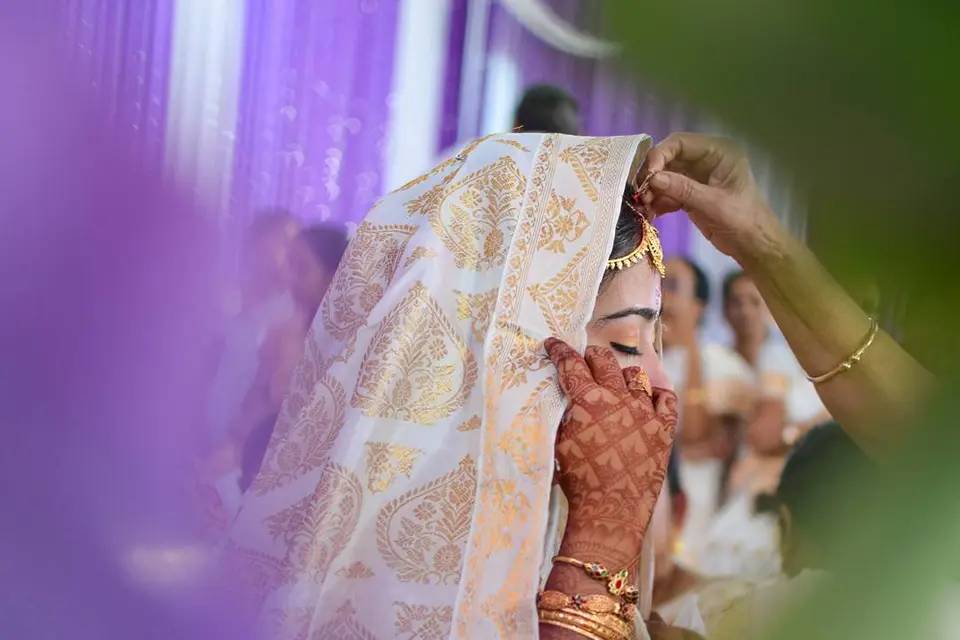
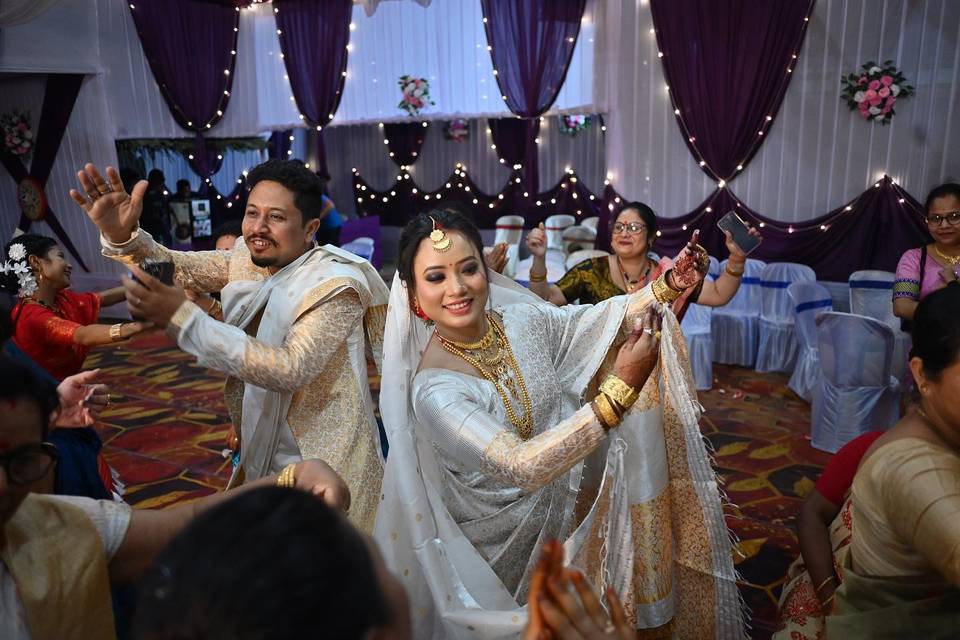
Image Courtesy: Happy Bride Photography
If you hail from Assam and are wondering about what all happens in an Assamese wedding, you’re at the right place. Today, we are taking you through an ultimate guide which talks about every ceremony in detail. Not only will it help you to understand your traditions better, but it’ll also be helpful when you have to plan your own Assamese wedding.
In this article:
1. Assamese Pre-wedding Ceremonies
2. Assamese Wedding Day Rituals
3. Post-wedding Assamese Rituals
Like every wedding ceremony, the rituals of the Assamese weddings are deeply rooted in the culture. Celebrating the beautiful colours of an Assamese wedding, there are multiple ceremonies before and after the wedding. We have explained each pre & post-wedding ceremonies that surround an Assamese wedding celebration.
Assamese Pre-wedding Ceremonies

Image Courtesy: Tarkik Borah Photography
Juran Diya
This function takes place two days before the wedding. The groom’s mother visits the bride’s house along with all the female members of her own family. In this ceremony, the groom’s mother gifts the bride Pan and Tamul (betel leaves and nuts) along with a Gamusa (a traditional Assamese cloth mostly in white with red thread embroidery). The bride takes the gifts given by her would-be mother-in-law to the wedding pandal.
Tel Diya
The Juran ceremony is followed by the custom of Tel Diya. Groom’s mother puts the betel leaves and nuts on the bride’s forehead and bathes her with oil. The Sindoor is put by the groom’s mother on the bride’s forehead two days before the wedding day. After the Juran and Tel Diya ceremony, the groom’s mother then gifts the bride’s her the beautiful wedding trousseau that includes a suitcase filled with Mekhela Chador, sarees, some utensils, jewellery and so on.
Assamese Wedding Day Rituals
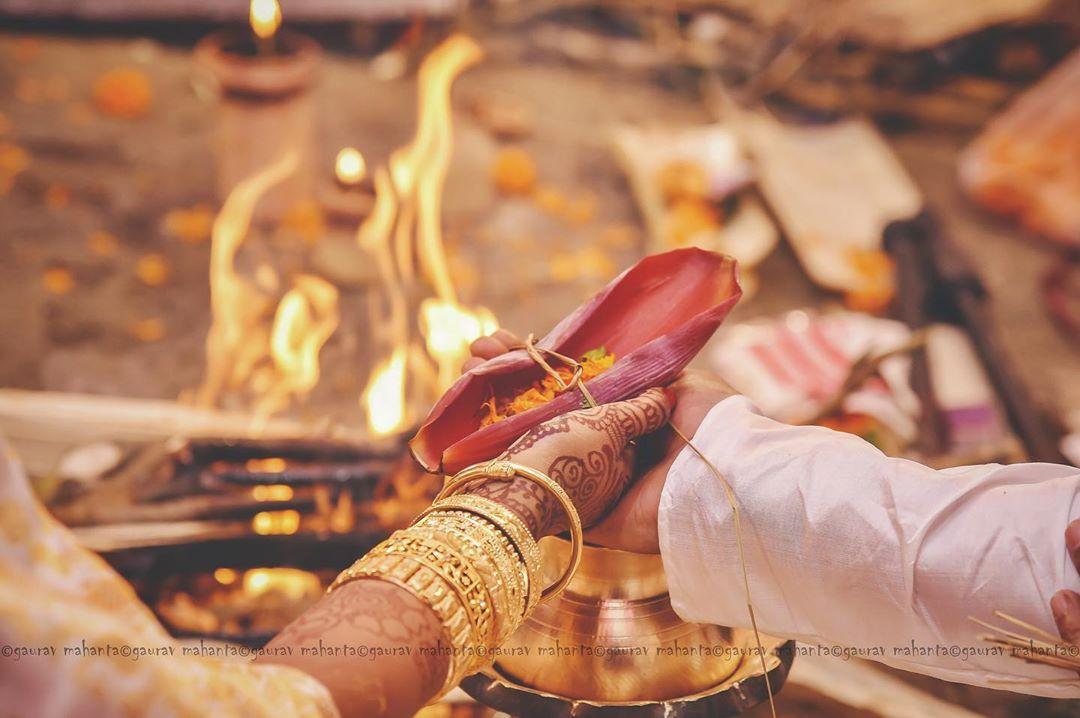
Image Courtesy: Gaurav Mahanta Photography
On the day of the wedding, there are rituals that start early during the day and carry on right until the wedding ceremony where the bride and groom sit around the holy fire of Havan. These ceremonies are mostly initiated by the elders of the families.
Pani Tula
During Pani Tula, both, groom’s mother as well as the bride's mother, go to a nearby water body for a ceremonial bath. They are accompanied by other female relatives who sing traditional wedding songs while this ceremony takes place. Both the mothers carry a coin and a knife during this ceremony. The coin is gifted to the couple whereas, the knife is tied to a traditional white cloth called Gamosa until the wedding is over and is kept safe with the couple.
Daiyan Diya
A bowl of sweet curd is sent to the bride's house. She eats half of this curd and the other half is sent back to the groom's house for the groom to consume. It is considered lucky for the couple and spreads love.
Nuwoni
Similar to North Indians' Haldi ceremony, Nuwoni takes places on the morning of the wedding day. A paste of turmeric, curd and oil is prepared and applied on the groom and the bride in their respective homes. Contemporary couples have also decided to do this together in one place. All elders participate in this ceremony and shower their blessings too.
Reception
Yes, there’s a Reception ceremony before the actual Assamese wedding. The bride gets dressed up and welcomes all her friends and relatives by offering them saunf. She is then taken inside for the groom to enter the venue.
Bhori Dhuwa
After the groom arrives at the venue along with a procession of his relatives and friends dancing and celebrating his wedding day, the bride's mother and her sister welcomes him with the entire bride’s side family. It starts with a traditional Aarti by the bride’s mom and feet washing by the bride's sister. bride’s brothers escort the groom to the stage by carrying him on their shoulders.
Biya
The bride's brothers carry her on their shoulders to make an entry. She sits next to the groom in front of a Havan Kund. The groom walks under an umbrella held by their brothers for them. The Biya begins with a Jaimala ceremony, followed by a Kanyadaan and Saat Pheras. The relatives sing traditional songs during the Biya ceremony, called the Biya Naam and then bless the couple once all the ceremonies are over.
Post-wedding Assamese Rituals
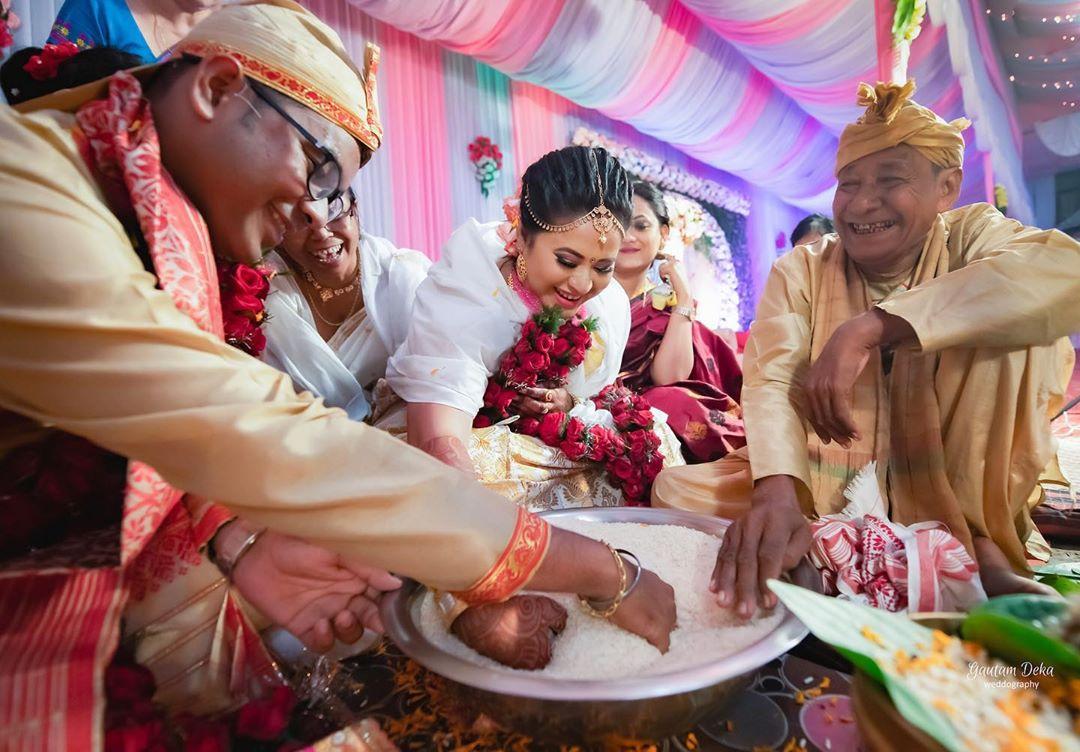
Image Courtesy: Gautam Deka Photography
Khel Dhemali
The couple plays fun games and competes against each other. These fun and games include finding the ring in a bowl of rice and so on. It is a perfect traditional ice-breaker that the newlywed and their families enjoy thoroughly.
Maan Dhora
The couple seeks blessings from all the relatives and elders present at the wedding venue by walking up to them and are loaded with gifts they receive from everyone.
Bidaai
The bride is sent off to the groom’s house in this ceremony. It’s an emotional moment for everyone in her family.
Ghor Gosoka
The groom’s mother isn’t allowed to see her son get married and stays home getting ready to welcome the newlyweds according to the Assamese wedding traditions. She then welcomes the couple to their home during the Ghor Gosoka ceremony.
Tips to Plan An Assamese Wedding
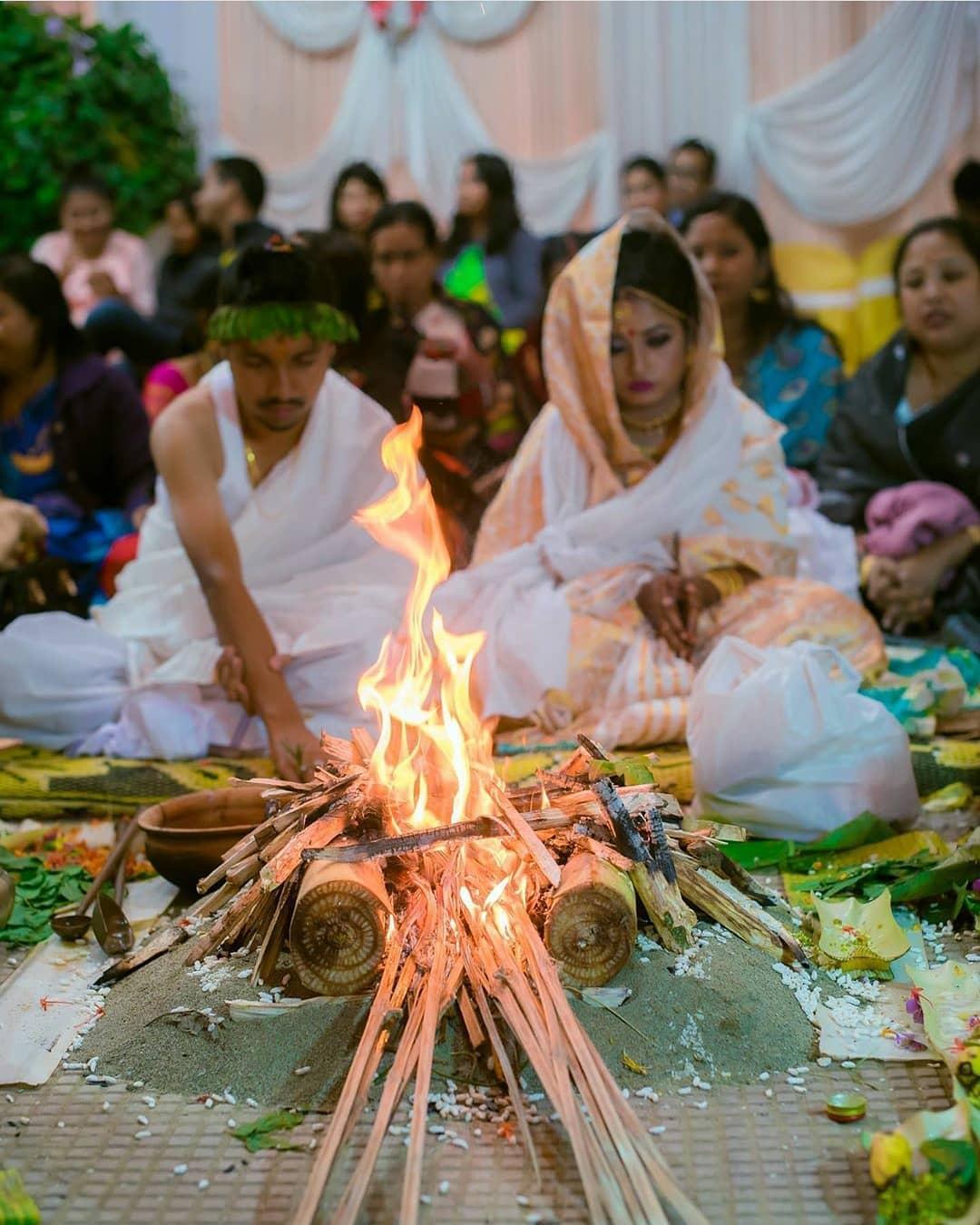
Image Courtesy: Dilwar Ahmed Photography
Assamese weddings are simple yet beautiful. All in all, it’s a two days affair but believes us, it requires a lot of planning. Here are a few pointers you should keep in handy while planning your own wedding:
- Decide a budget and list down everything you will be spending money on, including the caterers, outfits, venue charges and other miscellaneous expenses.
- Delegate responsibilities among your friends and family so that the burden doesn’t fall on just you.
- Keep a checklist of everything that you will require for the wedding day and put it in boxes according to each ceremony.
- Be patient because no matter how hard you try, things might not work according to your plan.
- Plan for contingencies by keeping in mind the day, the weather and the location of the venue.
Everything About Assamese Wedding Trousseau
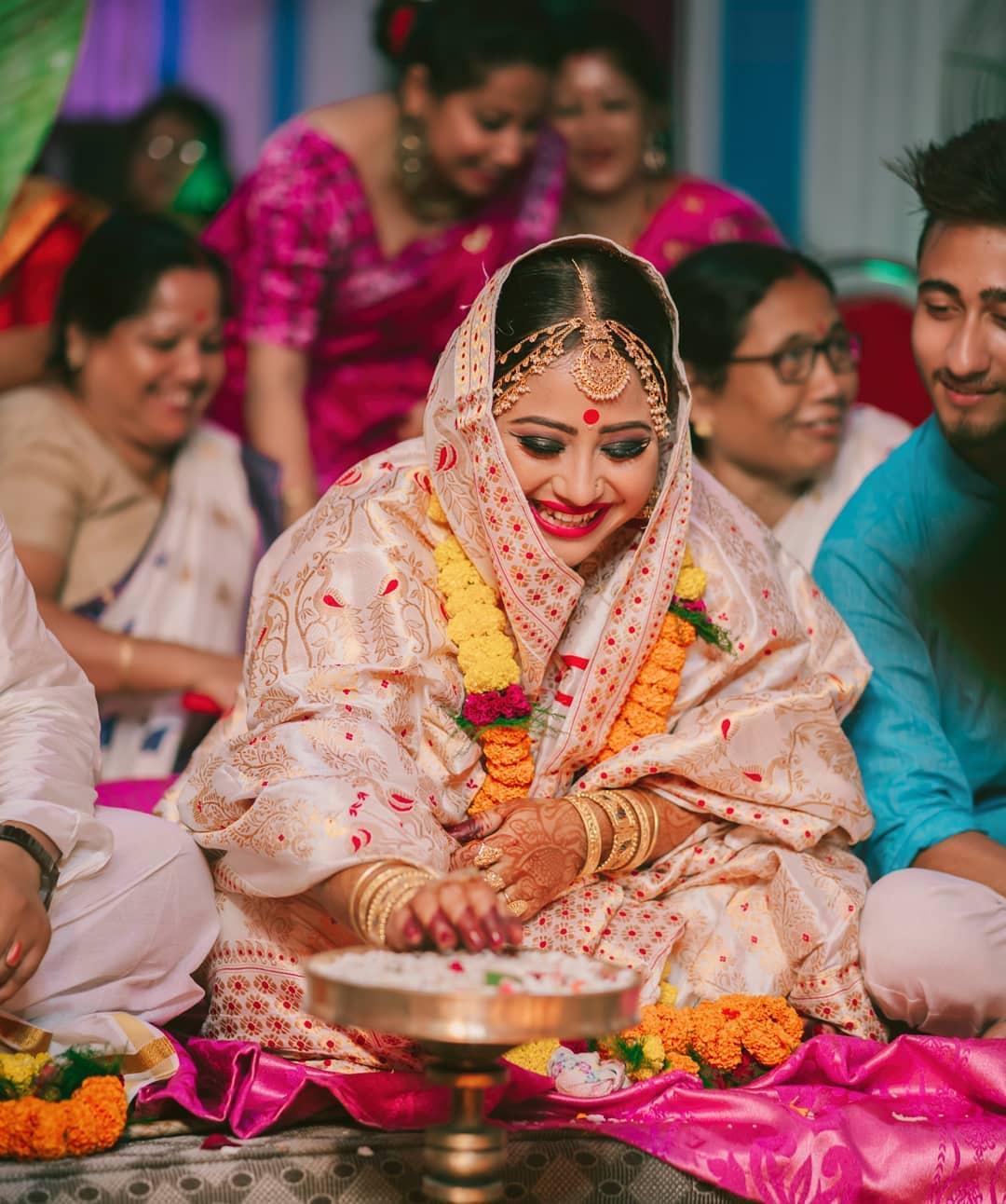
Image Courtesy: Vikash Das Photography
The groom wears a traditional silk Dhoti, Kurta along with a traditional Assamese shawl around his neck. The bride, on the other hand, wears Mekhela Chadar, which is an Assamese bridal saree. The outfits have zari embroideries and are traditionally white and red in colour. The bride wears gold jewellery along with her saree, to complete her Assamese bridal look.
Both, the groom and the bride, have a simple overall look. Unlike the North Indian or Bengali weddings, the traditional wear colour of the Assamese weddings is white and gold and the serenity of this combination is commendable.
If you are planning to host a dreamy Assamese wedding, do not forget to get in touch with the professional photographers in your city to capture the magical moments in the most candid way possible. Until the big day, start shopping for your bridal trousseau.
- With valuable inputs from Rashmi Barua & Avijit Deka.


